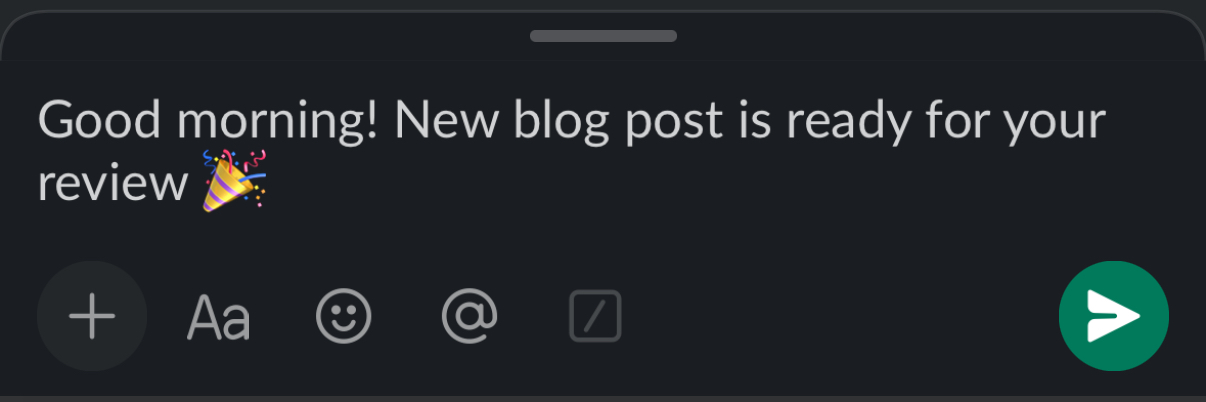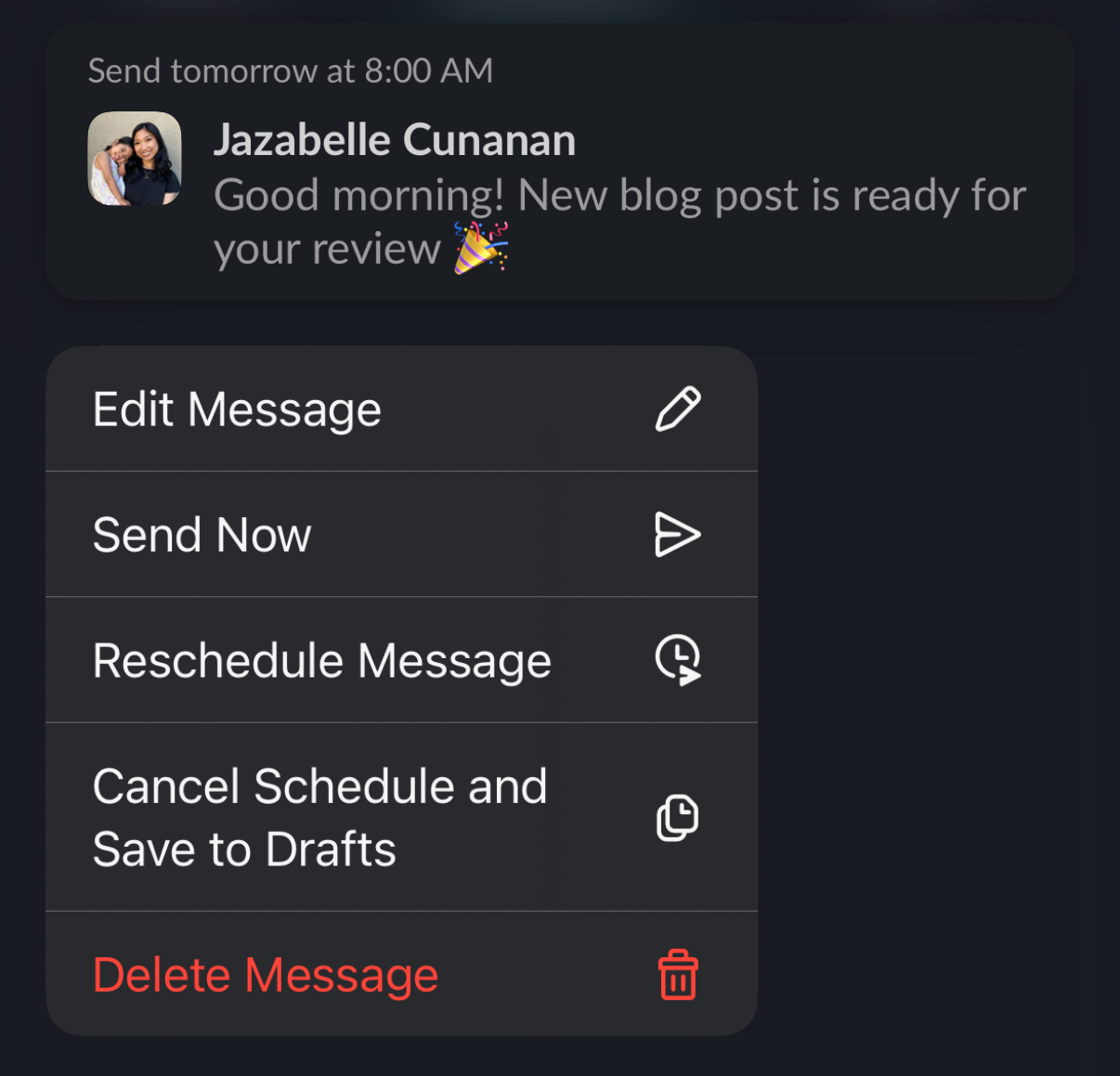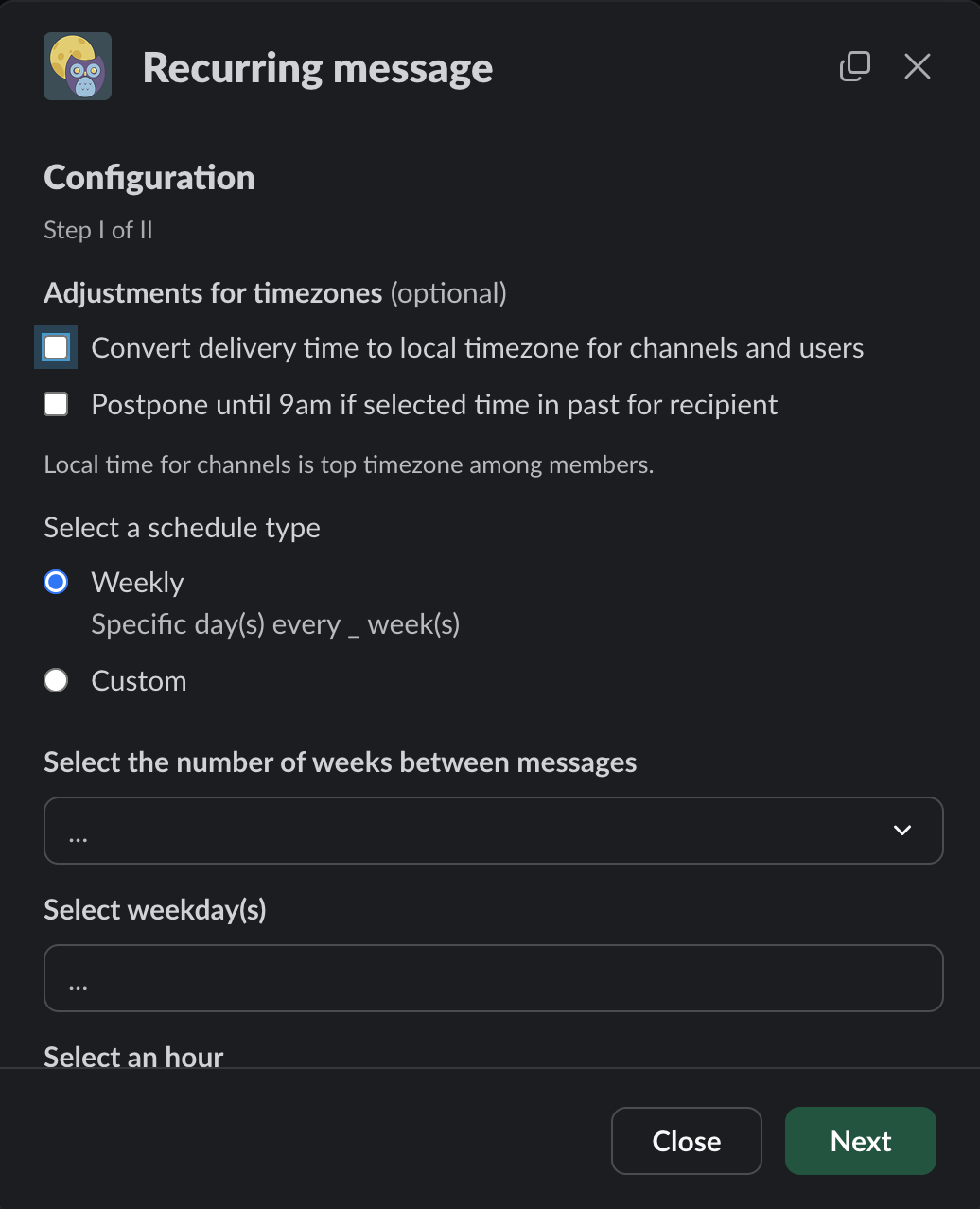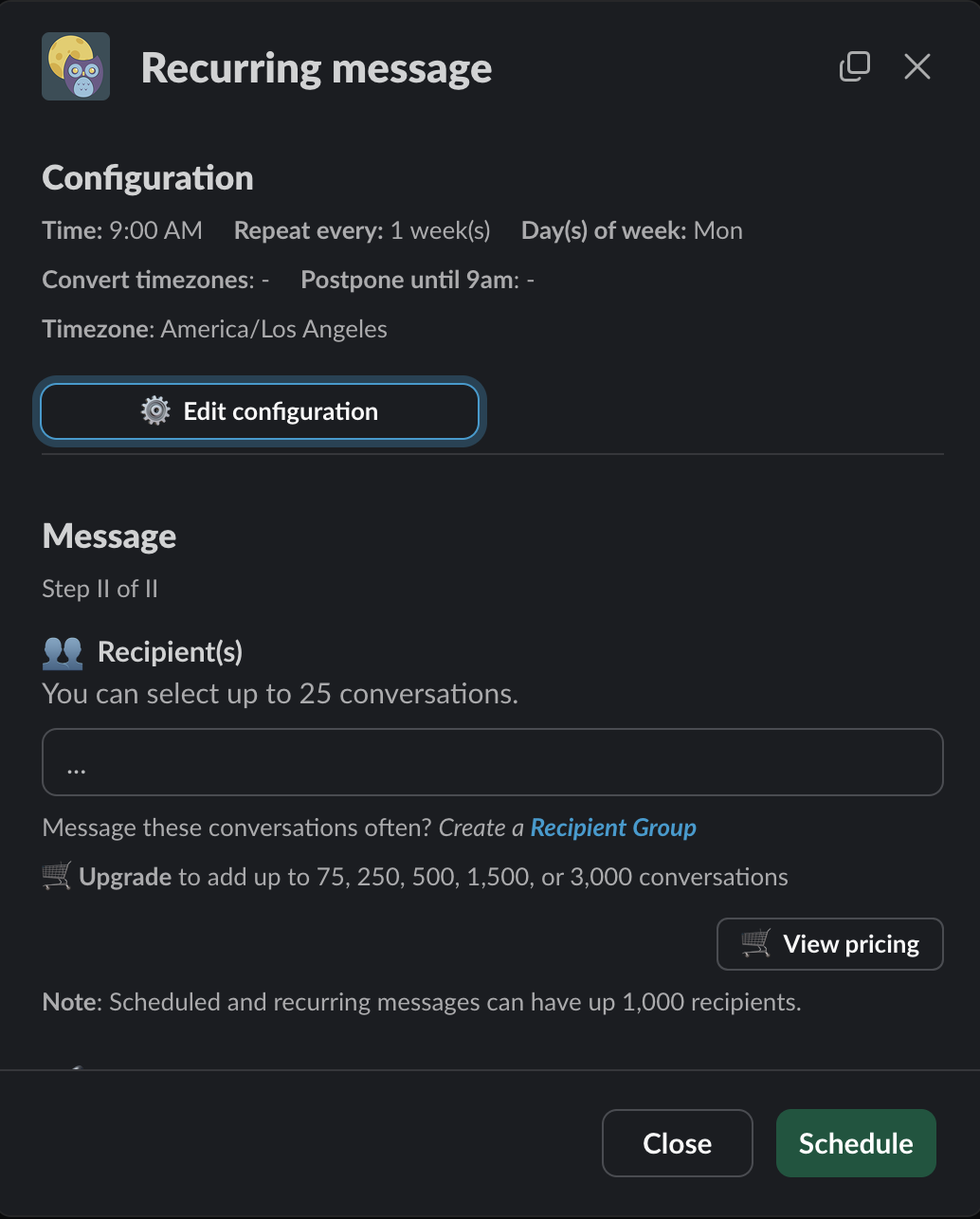In November 2021, Portugal made it illegal for bosses to contact their employees after work hours. And in France, the “right to disconnect” has been in effect through a similar law since 2016. Talk about work-life balance! While we don’t all live in countries with laws that protect us from late-night work notifications, thankfully there is something that every Slack user can do to promote better boundaries: schedule messages to send later.
Maybe you log on for the day as colleagues in different time zones log off. Maybe you’re a night owl and work while other team members are fast asleep. Or maybe you know the perfect time to ping someone for the quickest response. Whatever the case, you can schedule your Slack messages to deliver at a specific time that’s convenient for everyone. We’ll show you how.
In this article, you’ll learn:
- How to schedule Slack messages for a later time
- How to manage your scheduled Slack messages
- How to schedule recurring messages to a specific Slack channel
How to schedule a Slack message
You can schedule any message, whether a direct message or one sent to a channel, to be delivered later. Here’s how to do it:
On the Slack desktop app (Mac, Microsoft Windows, or Linux) or Slack.com
- Compose your message in the text field
- Click on the green downward-pointing arrow icon to open the drop-down menu
- Choose from one of the dates and times on the list, or click “Custom time” to specify your own
- Click “Schedule Message”
You’re all set!

On the Slack mobile app (Android and iOS)
- Compose your message in the text field
- Tap and hold the green paper plane icon to open the drop-down menu

- Choose from one of the dates and times on the list. Or click “Custom time” to specify your own
- Click “Schedule Message”
Good to go!
How to view and edit scheduled messages in Slack
Once you’ve scheduled a Slack message, you can make changes before it’s sent.
For example, you can:
- Edit a scheduled message
- Reschedule a message
- Send a scheduled message now
- Cancel a scheduled message and save it to your drafts
- Delete a scheduled message entirely
Here’s how:
On the Slack desktop app (Mac, Microsoft Windows, or Linux) or Slack.com
- Click “Drafts & sent” on the sidebar to view your schedule list
- Select “Scheduled”
- Hover over the message you want to manage, so that the icons appear in the upper-right corner
- Click on whichever action you wish to take: edit, reschedule, send, etc.

On the Slack mobile app (Android and iPhone)
- In the “Home” tab, tap “Drafts & Sent” at the top (you might have to swipe to find this option)

- Tap and hold the message you want to manage
- Click on whichever action you wish to take: edit, reschedule, send, etc.

How to schedule recurring messages
Here’s a scheduling feature you might not be taking advantage of: recurring messages. Use this feature to automate routines like daily standups and regular deadline reminders.
If you’re on a paid Slack plan, you can use Slack’s native workflow template to schedule recurring messages. If you’re not on a paid plan, here’s how to do it for free with a Slack app called Nightowl.
- Install Nightowl to your Slack workspace
- Open Nightowl in Slack, making sure you’re in the Home tab
- Expand the “Recurring Messages” section by clicking the “+” icon
- Click “New”
- Select your scheduling options, then click “Next”

- Enter your recipients and message, then select “Schedule”

Voilà! Nightowl will send your message at the scheduled time. Better yet, recurring messages will appear in the DM or Slack channel as though they’re coming from you — not a bot.
Best practices for using scheduled messages
Here are a few quick tips for when you schedule Slack messages:
- Be mindful of time zones. When scheduling messages for someone in a different time zone, try to schedule it during their likely working hours — not too early or too late. If you're unsure of the time difference, check their local time on their Slack profile to adjust accordingly.
- Avoid message overload. Instead of sending multiple scheduled messages back-to-back, consolidate your thoughts into one message. Use line breaks to break up the content. This prevents the recipient from feeling overwhelmed by notifications.
- Consider mentioning it's a scheduled message. If the recipient might expect a quick reply, let them know it's a scheduled message to manage their expectations. For example, “This message was scheduled, so no need to reply immediately.” You can also use tools like the Clockwise Slack app, which uses a moon emoji to show when you’re outside work hours, helping clarify response times.
.png)
Additional resources
- Video tutorial of how to schedule a Slack message: See it in action
- Slack’s Workflow Builder: An alternative way to schedule recurring messages, available only for paid Slack users
- Slack API: Create your own app for scheduling messages
- For Gmail users: Learn how to schedule emails for later
- Clockwise: Sync Google Calendar to your Slack status, automatically turn on Do Not Disturb mode, and much more!


.gif)



